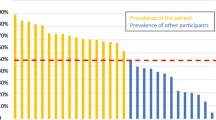Abstract
Studying prosody is important for understanding many linguistic, pragmatic, and discourse phenomena, as well as for solution of many applied tasks (in particular, in speech technologies). Prosody of everyday speech is extremely diverse, demonstrating high interpersonal and intrapersonal variations. Furthermore, natural everyday speech produces a multitude of effects which are hardly possible to obtain in speech laboratories. Because of this fact, it is very important to create resources containing representative collections of everyday speech data. The ORD corpus is a large resource aimed at studying everyday Russian speech. The paper describes the main stages of speech processing in the ORD corpus starting from segmentation of original files into macroepisodes and up to compiling prosody information into the database. This prosody database will be further used for building empirical prosody models.
Access this chapter
Tax calculation will be finalised at checkout
Purchases are for personal use only
Similar content being viewed by others
References
Couper-Kuhlen, E.: English Speech Rhythm: Form and Function in Everyday Verbal Interaction. John Benjamins Publications, Amsterdam (1993)
Couper-Kuhlen, E., Selting, M. (eds.): Prosody in conversation: Interactional studies. Cambridge University Press, Cambridge (1996)
Wells, B., Macfarlane, S.: Prosody as an interactional resource: turn-projection and overlap. Lang. Speech 41, 265–294 (1998)
Klatt, D.H.: Linguistic uses of segmental duration in English: acoustic and perceptual evidence. J. Acoust. Soc. Am. 59, 1208–1221 (1976)
Kello, C.T.: Patterns of timing in the acquisition, perception, and production of speech. J. Phonetics 31(3–4), 619–626 (2003)
Campbell, N.: Timing in speech. A Multi-Level Process. In: Horne, M. (ed.) Prosody: Theory and Experiment, pp. 281–334. Kluwer Academic Publishers (2000)
O’Connell, D.C.: Communicating with One Another: Toward a Psychology of Spontaneous Spoken Discourse. Springer New York, New York (2008)
Barth-Weingarten, D., Reber, E., Selting, M.: Prosody in interaction. John Benjamins, Amsterdam, Philadelphia (2010)
Benesty, J., Sondhi, M., Huang, Y. (eds.): Handbook of Speech Processing, Springer (2008)
Harrington, J.: The Phonetic Analysis of Speech Corpora. Wiley-Blackwell, Chichester (2010)
Huang, X., Acero, A., Hon, H.-W.: Spoken Language Processing: A Guide to Theory, Algorithm, and System Development. Pearson Prentice Hall, Englewood Cliffs (2001)
Jurafsky, D., Martin, J.H.: Speech and Language Processing: An Introduction to Natural Language Processing, Computational Linguistics, and Speech Recognition. Pearson Prentice Hall, Englewood Cliffs (2008)
Potapova, R.K., Potapov, V.V., Lebedeva, N.N., Agibalova. T.V.: Interdisciplinarity in the study of speech polyinformativity. Languages of Slavic Culture (2015)
Wennerstrom, A.K.: The Music of Everyday Speech: Prosody and discourse analysis. Oxford University Press, New York (2001)
Cummins, F.: Probing the dynamics of speech production. In: Sudhoff, S. et al. (ed.) Methods in Empirical Prosody Research. Language, Context and Cognition. W. De Gruyter, Berlin–New York, pp. 211–228 (2006)
Sibata, T.: Sociolinguistics in Japanese contexts. In: Kunihiro, T., Inoue, F., Long, D. (eds.) Mouton de Gruyter. Berlin-New York (1999)
Campbell, N.: Speech & expression; the value of a longitudinal corpus. LREC 2004, 183–186 (2004)
Burnard, L. (ed.): Reference guide for the British National Corpus (XML edition). Published for the British National Corpus Consortium by Oxford University Computing Services (2007). http://www.natcorp.ox.ac.uk/docs/URG/. Accessed 2 June 2017
Asinovsky, A., Bogdanova, N., Rusakova, M., Ryko, A., Stepanova, S., Sherstinova, T.: The ORD speech corpus of Russian everyday communication “One Speaker’s Day”: creation principles and annotation. In: Matoušek, V., Mautner, P. (eds.) TSD 2009. LNCS, vol. 5729, pp. 250–257. Springer, Heidelberg (2009). doi:10.1007/978-3-642-04208-9_36
Bogdanova-Beglarian, N., Sherstinova, T., Blinova, O., Ermolova, O., Baeva, E., Martynenko, G., Ryko, A.: Sociolinguistic extension of the ORD corpus of Russian everyday speech. In: Ronzhin, A., Potapova, R., Németh, G. (eds.) SPECOM 2016. LNCS, vol. 9811, pp. 659–666. Springer, Cham (2016). doi:10.1007/978-3-319-43958-7_80
Bogdanova-Beglarian, N., Sherstinova, T., Blinova, O., Ermolova, O., Baeva, E., Martynenko, G., Ryko, A.: Everyday Russian language in different social groups. Commun. Res. 2(8), 81–92 (2016)
Sherstinova, T.: Macro episodes of Russian everyday oral communication: towards pragmatic annotation of the ORD speech corpus. In: Ronzhin, A., Potapova, R., Fakotakis, N. (eds.) SPECOM 2015. LNCS, vol. 9319, pp. 268–276. Springer, Cham (2015). doi:10.1007/978-3-319-23132-7_33
Sherstinova, T.: The structure of the ORD speech corpus of Russian everyday communication. In: Matoušek, V., Mautner, P. (eds.) TSD 2009. LNCS, vol. 5729, pp. 258–265. Springer, Heidelberg (2009). doi:10.1007/978-3-642-04208-9_37
Hellwig, B., Van Uytvanck, D., Hulsbosch, M., et al.: ELAN – Linguistic Annotator. Version 5.0.0-alfa [in:]. http://www.mpi.nl/corpus/html/elan/. Accessed 28 Mar 2017
Sherstinova, T.: Pragmaticheskoe annotirovanie konnunicativnykh jedinic v korpuse ORD: mikroepisody i rechevye akty (Approaches to Pragmatic Annotation in the ORD Corpus: Microepisodes and Speech Acts). In: Proceedings of the International Conference on “Corpus linguistics-2015”, pp. 436–446 (2015)
Speech Technology Center. http://speechpro.com
Prodan, A., Chistikov, P., Talanov, A.: The system of preparation of a new voice for the speech synthesis system “VITALVOICE”. Komp’juternaja lingvistika i intellektual’nye tehnologii 9(16), 394–399 (2010)
Praat: Doing Phonetics by computer. http://www.praat.org
Sherstinova, T.: Speech acts annotation of everyday conversations in the ORD corpus of spoken Russian. In: Ronzhin, A., Potapova, R., Németh, G. (eds.) Speech and Computer (SPECOM 2016). LNAI. Springer, Switzerland (2016)
Acknowledgements
The creation of the ORD speech corpus was supported by several grants: Russian Foundation for Humanities projects No. 07–04–94515e/Ya (Speech Corpus of Russian Everyday Communication “One Speaker’s Day”) and No. 12–04–12017 (Information System of Communication Scenarios of Russian Spontaneous Speech), the Russian Ministry of Education project “Sound Form of Russian Grammar System in Communicative and Informational Approach”. Significant extension of the corpus and the software development was achieved in the framework the project “Everyday Russian Language in Different Social Groups” supported by the Russian Science Foundation, project No. 14–18–02070.
Author information
Authors and Affiliations
Corresponding author
Editor information
Editors and Affiliations
Rights and permissions
Copyright information
© 2017 Springer International Publishing AG
About this paper
Cite this paper
Sherstinova, T. (2017). Preparing Audio Recordings of Everyday Speech for Prosody Research: The Case of the ORD Corpus. In: Karpov, A., Potapova, R., Mporas, I. (eds) Speech and Computer. SPECOM 2017. Lecture Notes in Computer Science(), vol 10458. Springer, Cham. https://doi.org/10.1007/978-3-319-66429-3_62
Download citation
DOI: https://doi.org/10.1007/978-3-319-66429-3_62
Published:
Publisher Name: Springer, Cham
Print ISBN: 978-3-319-66428-6
Online ISBN: 978-3-319-66429-3
eBook Packages: Computer ScienceComputer Science (R0)




